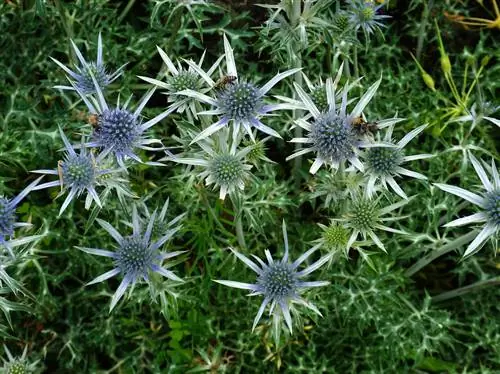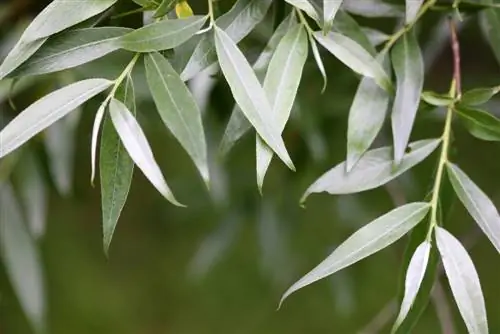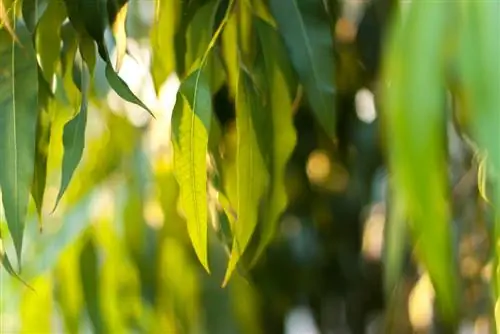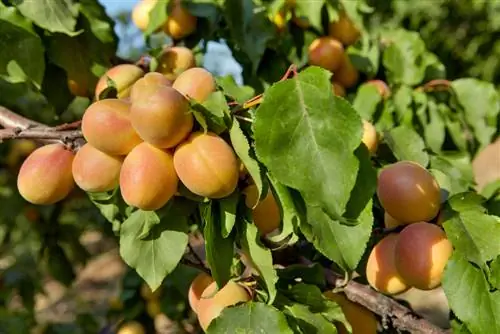- Author admin [email protected].
- Public 2023-12-16 16:46.
- Last modified 2025-01-23 11:22.
The leaves shape the appearance of a sweet thistle long before the flowering period begins. You can read useful tips about the appearance of the leaves of native man litter species here. The question of whether sweet thistle leaves are edible is also answered.

What do sweet thistle leaves look like?
Sweet thistle leaves areoval-heart-shapedor broad-lanceolate to linear. It is characterized by athorny leaf edge Native man litter species (Eryngium) have gray-green or bluish-green leaves. The foliage of the sweet thistle consists of a rosette of leaves, stem leaves and bracts. Sweet thistle leaves are edible and he althy.
Are sweet thistle leaves edible?
Sweet thistle leaves areedibleand rich in he althy ingredients. In medieval peasant cuisine, young leaves were fermented in brine like pickles and eaten as a vegetable. Since the mid-18th century, field man litter and flat leaf man litter have been known asmedicinal plants. The leaves are said to have a calming, expectorant, diuretic and blood purifying effect. The generic name Mannstreu is an allusion to the use of the herb and roots as an aphrodisiac.
To prepare it as a healing tea, pour 200 milliliters of boiling water over 1 teaspoon of sweet thistle leaves.
How do you recognize sweet thistle leaves?
The foliage of a noble thistle (Eryngium) consists of a basalleaf rosette, thestem leavesandbracts Depending on the species, sweet thistle leaves are shaped differently and thorny. The leaves of five local man litter species at a glance:
- Alpine man litter (Eryngium alpinum): deep green, oval-heart-shaped, awn-toothed, bracts blue, piercing-serrated.
- Ivory thistle, giant thistle (Eryngium giganteum), white-grey-silver, heart-shaped, bracts silvery-white, toothed.
- Feldmannstreu (Eryngium campestre): gray-green, broadly lanceolate to palmate-pinnate, bracts greenish-white, linear and thorny.
- Flat-leaf man litter (Eryngium planum): gray-green, heart-shaped to finger-shaped, thorny-toothed, bracts bluish-green, linear, serrate.
- Sea thistle (Eryngium maritimum): blue-green, oval-triangular, white, jagged leaf edge, bracts blue-green, three-lobed, thorny.
Tip
Sweet thistle is a natural treasure
The sweet thistle should not be missing in a bee-friendly garden. With its summer flowers, the wildly romantic perennial invites honey bees, wild bees and bumblebees to collect nectar. The endangered man litter silk bee (Colletes hylaeiformis) and the endangered carrot sand bee (Andrena nuptialis) enjoy the nectar buffet. Sweet thistle leaves are a valuable source of food for butterfly caterpillars. In winter, hungry birds peck the nutritious seeds from the wilted inflorescences.






